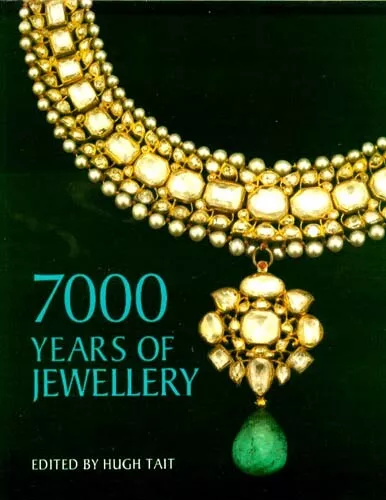Jewelry 7,000 Years Ancient Rome Egypt Phoenicia Persia Turk Celt Greek Etruscan
"7,000 Years of Jewellery" by Hugh Tait and the British Museum.
NOTE: We have 75,000 books in our library, almost 10,000 different titles. Odds are we have other copies of this same title in varying conditions, some less expensive, some better condition. We might also have different editions as well (some paperback, some hardcover, oftentimes international editions). If you don’t see what you want, please contact us and ask. We’re happy to send you a summary of the differing conditions and prices we may have for the same title.
DESCRIPTION: Softcover. Publisher: British Museum (2007). Pages: 265. Size: 11 x 8¾ x 1 inch; 2¾ pounds. Summary: The most comprehensive and beautifully illustrated history of jewelry. This exhaustive survey was published to critical acclaim by the British Museum Press. Since publication, the museum has expanded its collection, with major acquisitions of pieces from Europe and Asia. The new edition includes a complete revision of the section on Europe after 1700, plus revisions to the sections on Celtic Europe, Roman Britain, cameos and finger rings. The book explores the varied styles, techniques and materials used to make jewelry in many civilizations throughout the world and across the millennia. Egyptian necklaces, Celtic torcs, South American gold masks, Renaissance pendants and Art Nouveau buckles are examples of the range of the masterpieces described and illustrated with 400 superb photographs.
"7000 Years of Jewelry" takes readers on an impressive tour that includes, among other times and places: The Middle East: 5000-2000 BC -- Egypt: 1500-900 BC -- Phoenician, Greek, Etruscan and Persian Lands: 850-325 BC -- China, Celtic Europe, Mexico and Peru: 600 BC-AD 600 -- The Mediterranean, India, Egypt, Roman Britain and Byzantium: 325 BC-AD 600 -- Europe, China, Korea and Japan: 300-1000 -- Mayan Central America: 600-1000 -- Central and South America: 500-1500 -- Europe, Islam, China, Korea and Java: 1000-1500 -- China, India, Tibet and Mongolia: 1500-1850 -- West Africa: 1500-1800 -- Europe: 1500-1950. More comprehensive than before, this reference remains the finest and most beautifully illustrated history of jewelry ever published.
CONDITION: NEW. New oversized softcover. British Museum (2007) 256 pages. Unblemished, unmarked, pristine in every respect. Pages are clean, crisp, unmarked, unmutilated, tightly bound, unambiguously unread. Satisfaction unconditionally guaranteed. In stock, ready to ship. No disappointments, no excuses. PROMPT SHIPPING! HEAVILY PADDED, DAMAGE-FREE PACKAGING! Meticulous and accurate descriptions! Selling rare and out-of-print ancient history books on-line since 1997. We accept returns for any reason within 30 days! #7599.3a.
PLEASE SEE DESCRIPTIONS AND IMAGES BELOW FOR DETAILED REVIEWS AND FOR PAGES OF PICTURES FROM INSIDE OF BOOK.
PLEASE SEE PUBLISHER, PROFESSIONAL, AND READER REVIEWS BELOW.
PUBLISHER REVIEWS:
CHAPTER HEADINGS:: The Middle East: 5000-2000 BC Egypt: 1500-900 BC Phoenician, Greek, Etruscan and Persian Lands: 850-325 BC China, Celtic Europe, Mexico and Peru: 600 BC-AD 600 The Mediterranean, India, Egypt, Roman Britain and Byzantium: 325 BC-AD 600 Europe, China, Korea and Japan: 300-1000 Mayan Central America: 600-1000 Central and South America: 500-1500 Europe, Islam, China, Korea and Java: 1000-1500 China, India, Tibet and Mongolia: 1500-1850 West Africa: 1500-1800 Europe: 1500-1950.
REVIEW: Jewelry is one of the oldest forms of decorative art. Totally unconnected civilizations, separated by the vast barriers of time and space, have discovered the intrinsic beauty of certain minerals and metals. Gold in particular attracted craftsmen in ancient Egypt some 5,000 years ago as much as it does the jewelers and designers of today. This panoramic history, illustrated with the world-renowned collections of the British Museum, reveals the varied styles, techniques, and materials that have delighted men and women for centuries.
Ancient Greek necklaces, Celtic torcs, renaissance pendants, and Art Nouveau buckles are among the masterpieces specially photographed for this book and described by a team of experts from the British Museum. Clear, concise introductions establish the historical background for each region and period so that the jewelry can be appreciated not only for its craftsmanship and beauty, but also within the context in which it was created and worn. Separate sections on cameos, rings, and amulets discuss the particular uses these objects have been put to throughout time.
The areas covered in this comprehensive volume include Egypt and Western Asia, Africa and the Middle East, ancient Greece and Rome, China, Korea and Japan, Europe, Byzantium and Turkey, Central and South America, and India and Tibet, among other regions and countries, spanning fully 7,000 years.
Hugh Tait, the editor, is Deputy Keeper of Medieval and Later Antiquities at the British Museum. He is author of “The Waddesdon Bequest” and “Clocks and Watches”, and editor of “The Art of the Jeweler”, the catalog of the Hull Grundy gift of jewelry, engraved gems, and goldsmiths’ work to the British Museum. In 1976 he organized the British Museum’s highly acclaimed exhibition “Jewelry Through 7,000 Years”, the original inspiration for this book.”
PROFESSIONAL REVIEWS:
REVIEW: The New York Times Book Review said of this book, "It is a mind-boggling feat, this survey of 7,000 years of glittering memorabilia of lost empires, royal egos, superstition and sentiment." This comprehensive volume is one of the best and most beautifully illustrated histories of jewelry available. 400 illustrations, 250 in full color.
REVIEW: For the layman or the scholar, “Jewelry: 7,000 Years” is an essential companion.
READER REVIEWS:
REVIEW: This book surveys jewelry from as early as 5000 BC to the mid 20th century and showcases work from all over the world. What I like about this book is that there are lots of photos, both color and black and white. Most of the photos are large, and all of them show clear details. Since the book covers so much time and geographic area, there is not a lot of information on each time/culture, but that's understandable. An inspiring book for the jewelry designer, a great coffee table book for everyone else!
REVIEW: Better than average photos and informative text. The examples are by definition museum quality. If you are inspired by the designs captured by antiquities, this is a fabulous survey. The level of skill and craftsmanship required to make some of these pieces is astounding. I could not put it down!
REVIEW: The history of jewelry from seals and signet rings and male-focused pieces, to religious devotion pieces, to tokens of affection and marriage is fascinating. You will be surprised at how many of these pieces have influenced contemporary jewelry
REVIEW: A really beautiful and comprehensive book. There is a lot of silver and enamel work and carved gemstones, as well as gold items.
REVIEW: The book is quite interesting, the pictures are superb
REVIEW: The book contains many pictures, illustrations and information on jewelry from different ancient civilizations to more modern pieces. A very nice book to own.
REVIEW: Brilliant book! Splendid photos of exquisite artifacts!
ANCIENT JEWELRY: The art of the jeweler. Metalsmiths' shops were the training schools for many of the great artists of the Renaissance. Brunelleschi, Botticelli, Verrocchio, Ghi-berti, Pollaiuolo, and Luca della Robbia all were trained as goldsmiths before they embarked upon the higher arts. The goldsmith made silver vases for the dinner tables of cardinals; knights sent sword blades to be mounted in rich hilts; ladies came to have their jewels set; princes needed medals to commemorate their victories; popes and bishops wished to place chased reliquaries on the altars of their patron saints; and men of fashion ordered medallions to wear upon their hats.
Although many materials-including iron-have been used for jewelry, gold is by far the most satisfactory. One could not expect the same results from any other metal, for the durability and the extraordinary ductility and pliancy of gold and its property of being readily drawn out or flattened into wire or leaf of almost infinite fineness have led to its being used for works in which minute-ness and delicacy of execution were required. Gold may be soldered, it may be cast, and any kind of surface, from the rough to the highest possible polish, given to it. It is the best of all metals upon which to enamel.
Gold was easily retrieved from the gravel of river beds, where it was washed from the eroded rocks; hence it is one of the oldest metals known. Unlike most metals, gold does not tarnish on exposure to the air but remains brilliant. Pure gold is too soft for general use, but it can be hardened and toughened by alloying with most of the other metals. Color is one of its important qualities. When the metal is pure, it is nearly the orange-yellow of the solar spectrum. When it contains a little silver, it is pale yellow, or greenish yellow; and when alloyed with a little copper, it takes a reddish tinge-all so effective in varicolored jewelry.
These alloys have an ancient history, electrum, an alloy of gold and silver which assured beautiful hues, having been used by the Egyptians, Greeks, and other ancient peoples. The ancients, from the most remote times, were acquainted with the art of beating gold into thin leaves, and this leaf was used for other purposes besides personal adornment. Gold leaf was used in buildings for gilding wood, and Egyptians, Greeks, and Romans were adepts in applying it. It was no great departure to introduce gilded backgrounds to paintings or figures in mosaic and finally to illuminated manuscripts.
In the use of gold Byzantium went beyond Rome or Athens. When more skill was attained by painters, backgrounds in perspective took the place of those in gold. Early examples of leaf work in this exhibition may be seen in the headdress and jewelry of Queen Shubad's ladies-in-waiting from the excavations of the royal tombs at Ur in Mesopotamia. They date from a period between 3500 and 2800 B.C.
A second step was the cutting of gold leaf into thin strips to make wire. It is still a question whether the art of wire-drawing was known to the ancients. Plaited wire-work, as used in many places and over a wide period of time, is well represented in ancient history. Fusing and soldering are also ancient techniques. Granular work, the soldering of minute grains of gold one beside the other in a line or disposed ornamentally over a surface, was known to the ancient Egyptian jewelers, as well as to the classical, oriental, and barbarian gold-smiths. This traditional technique can be traced through the centuries, splendid granular work of the ancient and modern civilizations being well represented in archaeological finds.
Filigree, the arranging of wires in patterns, usually soldered to a base, is often associated with granular work. The oriental nations, especially the Moors, knew how to execute filigree with rare delicacy and taste, this technique adapting itself particularly to their designs. Embossing and chasing are techniques of widespread use. The relief effect of embossing is produced by various means. A thin pliable sheet of metal may be pressed into molds, between dies, or over stamps, or it may be molded free hand. An excellent example of an embossed gold sheet which was pressed or hammered may be seen in the Greek sword sheath from South Russia. In handwork the sheet of metal is placed against a ground with a yielding surface and the design is raised from the back by a series of punches.
The work of the chaser is closely related to that of the sculptor, the ornament on the face of a casting or an embossed work being finished with chisels or chasing tools. Jewelry was often enriched by stamping, a simple process by which a design is made in depression with a punch., and the gold fixed by heating to redness; and the surface finally burnished. In all countries the work of the lapidary was combined with that of the goldsmith.
Much jewelry depended for its splendor of effect chiefly upon its inlay of brilliantly colored stones, jaspers, agates, lapis lazuli. Much of the commoner kinds of jewelry, such as buckles for the belts of warriors or brooches for the vestments of ecclesiastics too poor to buy silver or gold, were made of bronze, enameled and mercury-gilded. Mercury-gilding is a process of great antiquity. The object was first carefully polished and rubbed with mercury; thin gold was then laid on and pressed down, the mercury being subsequently volatilized, and so forth, or upon colored glass inlays.
The Egyptians and Greeks were incomparable artists in intaglio (cutting concave designs or figures) in gold, and one notes with astonishment the mastery they possessed over the stubborn hard stones, including the sapphire. A Greek gold ring with an intaglio engraving of a girl stretching herself is one of the finest in ancient history. The engraver's art both in cameo and in intaglio attained a high degree of excellence about 500 B.C., which lasted until about the third or fourth century A.D. The classical artists used rich and warm-tinted oriental stones, the increased intercourse with the East after the death of Alexander the Great having a marked influence on the development of the art.
In gem-engraving the ancients used essentially the same principle that is in use today, that is, drilling with a revolving tool. They also used a sapphire or diamond point set in a handle and applied like a graver. In early medieval times gem-engraving was little practiced, but antique cameos were held in peculiar veneration on ac-count of the belief, then universal, in their potency as medicinal charms. With the Renaissance, the art of gem-engraving was revived, and engravers from that time onward have produced results equal to the best ancient work.
Glass in ancient times was so precious that some nations demanded tribute in this fragile material instead of gold. It is said that a citizen invented a method for making malleable glass and was invited to visit the Roman Emperor Tiberius. He brought a vase, which was thrown to the ground but only dented. A hammer again rounded it into shape. Tiberius then asked whether any other man knew the secret of manufacture. The artisan answered no, whereupon the emperor ordered him beheaded.
Glass inlay, widely used from Egyptian times, is often wrongly called enamel. It is not enamel, which, although a vitreous material, is employed in the powdered state and always fused into position by heat, whereas the glass inlay was always cut or molded and cemented into position. This glass inlay is often referred to as paste, which in the modern sense means glass with a high refractive index and high luster employed to imitate the diamond. Good examples of paste may be seen in some eighteenth-century English and French.
For centuries Egypt was the “promised land” of the ancient civilized world, for the Pharaohs had at their disposal enormous stores of gold. The Egyptians excelled in metal-work, especially in gold, and many techniques employed by goldsmiths today can be seen in ancient Egyptian jewelry, particularly for instance the treasure of el LThuin, which was recovered in its entirety and in nearly the same perfect condition in which it had been placed in the tomb; or the jewelry which had once graced the person of the Princess Sit Hathor Yuinet, daughter of King Se'n-Wosret II, who reigned from 1906 to 1887 B.C. and near whose pyramid, at el Lahfin, she was buried.
Her girdle, one of the outstanding pieces of ancient jewelry, is of amethyst beads and hollow gold panther-head ornaments, inside which pellets tinkled whenever the wearer moved. From the same treasure there is the neck-lace with a pectoral of King Se'n-Wosret II. On either side of the pectoral the hawk of the god Horus supports the cartouche of the king and a group of hieroglyphics which signify, "May King Se'n-Wosret II live many hundreds of thousands of years." The pectoral is gold inlaid with lapis lazuli, car-nelian, and turquoise, and the eyes of the shape made of actual flowers, fruits, and leaves, which were presented to guests to wear at banquets and other festivities.
Brilliant color is one of the most attractive characteristics of Egyptian jewelry. It had its origin in the beads, both of semi-precious stones and of faience, which were widely worn during the Old Kingdom (2800-2270 B.C.). Beads of faience of different colors were also in fashion during the XVIII Dynasty. The composition of the broad collars of faience of this period was derived from ornaments of the same engraving, soldering, and metal intaglio.
The Greek jeweler, like the Egyptian, excelled in the arts of embossing and chasing. Greece had little access to precious stones before Alexander's Eastern conquests, and so from the sixth to the fourth century B.C. the jeweler specialized in metalwork. He was a master of both granulated and filigree decoration, and he did exquisite work in plaiting gold into chains and in modeling it into little figures, both human and animal. Much of the best of Greek jewelry is sculpture in little. Ornamental goldwork naturally required more minute workman ship than sculpture in bronze and marble, and excellent modeling often makes little objects impressive as well as intricate.
A few famous examples of ancient Greek jewelry, such as an earring in the form of a siren, is a charming example of Greek jeweler's modeling. Other examples include a pair of earrings of the fourth century B.C. from Madytos on the Hellespont, as well as an eagle and a palmette made of hammered gold sheets; the feathers of the eagle are incised; each leaf is edged with beaded wire; and the fruit is covered with granulation. Another example might be a bracelet, of rock crystal, with gold finials, each finely embossed with a ram's head, which shows skillfully modeled figures, as well as plaited chains, and filigree and granular work of rare minuteness.
The Ganymede jewelry, made soon after 350 B.C., is one of the most precious sets that have come out of antiquity. Most techniques are represented on the earrings, bracelets, brooches, necklace, and emerald ring. On the earrings the figures of Ganymede are solid castings; Ganymede's drapery, the wings and tail. The technique of Etruscan goldwork is much the same as that of the Greek. The metal is thin, it is pressed or beaten out in designs in low relief, and it is further decorated by the surface application of filigree and small granules of gold. Several molds of stone have been discovered, and it is probable that the thin gold was pressed into the mold by means of a metal or agate style, solder being used to fix the separate pieces of gold together whenever necessary. Some of the granulated work is so fine that without a magnifying glass it is almost impossible to believe that the patterns are actually laid on with an infinite number of minute spherical grains. The burial chamber of an Etruscan lady, near Vulci, opened over a century ago, yielded a rich parure.
Archaeologists have recovered several headdresses reflecting the custom Chinese women had of decking their hair with floral ornaments. These are richly colored, and some of the materials used in them, besides gold, are amber, coral, seed pearls, and an exclusively Chinese material-bright blue kingfisher feathers. In Chinese jewelry the art of the metal-worker achieves an exquisite delicacy. A famous golden phoenix crown shows perhaps most clearly of all the works in the exhibition the ability of the goldsmith to take infinite pains. It has more than thirty separate ornaments, made of different con-formations of gold wire and decorated with pearls and other stones.
Many of the ornaments are set on tiny springs so that they quiver with the slightest movement. jade, exquisitely carved. With the exception of pearls, the Chinese did not use precious stones. The prettiness and color of Chinese jewelry tempt one to describe it at length, but according to a Chinese proverb, "A thousand words do not compare with one look." The Japanese also rank high as metalworkers, their sword furniture, the jewelry of the Japanese nobleman, especially showing the subtle skill of the artist in manipulating hard and soft metals. In enriching the fittings many processes of metal ornamentation-relief carving, relief inlay or applique, overlay, incised and recessed carving-are employed. It is the combination of techniques and alloys which makes their work of outstanding interest to jewelers as well as to the amateur. Today these fittings are often worn as jewelry in the West. In Japan sword furniture is frequently signed by masters as well known as famous painters. The Greek jeweler, like the Egyptian, excelled in the arts of embossing, chasing, A glance at the magnificent weapons from Persia, Turkey, and India will remove any impression that the love of personal adornment is a purely feminine attribute. Orientals often wear daggers embellished with silver and semiprecious stones even over their most ragged clothes, which shows that they take life with a gesture. In India perhaps more than anywhere else, jewelry has played a vital role in the life of the people, from the lowest rank to the highest. Although none of the Indian jewelry is much older than the eighteenth century, it represents designs and methods of decoration that go back to much earlier periods, some of them reflecting the influence of Hellenistic civilization. Some pieces are made of gold or silver alone, others are richly set with diamonds, rubies, and emeralds or decorated with enamel. The Greek jeweler, like the Egyptian, excelled in the arts of embossing, chasing, Much of this jewelry was made in Jaipur, which was particularly famous for its enamelwork. A gold bracelet with dragon-head terminals is an outstanding example of combined jeweled and enameled work. The backs of jeweled ornaments were often enameled with fine patterns, so that the reverse of a necklace or pendant would be as fine in effect as the right side. The jewelry of the nomadic Iranian tribes is represented by a few choice pieces cast in gold and chased. These include many Scythian ornaments, winged griffins, stags, and rosettes, which were used as decoration on clothing; and two clasps of about the first century A.D., Sarmatian and Parthian in origin.
The Middle Ages are perhaps best represented by an extensive collection of jewelry from the Morgan collection, of the period of the barbarian migrations and of the Byzantine period. The gold ornaments in the Albanian Treasure (seventh-ninth century) are thought to be the work of nomad craftsmen in the train of barbarian tribes migrating through the Balkans from Central Asia. The splendid collections of Gallo-Roman, Germanic, and Merovingian jewelry, distinctive features of which are the colored glass inlays and the filigree and beaded work in gold, need only be mentioned, for they have been described and illustrated in the catalogues of Seymour de Ricci. They were made from the fourth to the eighth century A.D., the latest probably not exceeding the reign of Charlemagne (742- 814).
It was Charlemagne who stopped the custom of burying the dead with their weapons and jewelry because all the wealth was going into the ground instead of into the treasury. The result is that much fine jewelry was melted down. The Eastern influence which had come westwards after the year 330, when Constantine transferred his court from Rome to Byzantium (Constantinople), is seen in many pieces of ancient jewelry. The goldsmiths followed the Emperor Constantine to Byzantium, and from there came many marvels of art and beauty as presents to the Western churches. The jewelry in the treasure (sixth century) found on the island of Cyprus is in the Eastern style. It was probably buried during the Arab invasion of the island.
About the beginning of the eleventh century the Byzantine influence had been largely spent, and new styles were introduced. Families of monks, animated by one spirit and educated in the same way, lived in monasteries which were schools of ecclesiastical goldsmiths. They built and adorned their churches; they hammered, chased, and enameled gold, silver, and bronze. Altar fronts, pyxes, lamps, patens, chalices, crosses, candlesticks, and reliquaries were made, and most of their motives of design, methods of working, and chemical processes were the common property of the abbeys. Lay craftsmen, too, devoted more of their energies than previously to building cathedrals and creating ecclesiastical art, and there is consequently a close connection between the work of the architect and the mediaeval goldsmith.
This ecclesiastical influence is seen in a late eleventh-century book cover of silver-gilt, ivory, cabochons, and enamel, from the cathedral of Jaca. Before the multiplication of books by printing, their covers had more to do with the goldsmith's art than with that of the binder. Architectural influence is shown in the French thirteenth-century reliquary of Saint Margaret. Reliquaries like this were master-pieces of work in precious metals. They were built up of innumerable plates soldered together, with buttresses, pinnacles, and traceried windows, like little models of churches or small chapels. During the Renaissance, During the Renaissance, everything that could be gold was gold, not only jewelry but plate; and dresses for men and women and even horse trappings were made of cloth of gold. It was an age when the setting of a gem or the molding of a goblet was a matter that would occupy a grave potentate to the exclusion of affairs of state. In order to satisfy the demands of the time Columbus set out not to discover another continent but to find a convenient route to India, the land of gold, pearls, and spices. The Renaissance goldsmiths made the most of the mediaeval tradition in technique and in due course they developed perfection in workmanship. The rich and varied pendants are splendid examples of the renaissance jeweler’s art.
This type of ornament originated in devotional usage, and during the Middle Ages its decoration was almost always of religious significance. The pendant was a conspicuous ornament and was usually of fine workmanship. Portrait medallions, especially those of historical personages, were made by distinguished masters. A splendid pendant, representing Bona Sforza, Queen of Poland, is signed by Jacobus Veron (Gian Jacopo Caraglio) and is dated 1554. The cameo portrait of the queen is sardonyx, her chain and hair ornament gold. The Visconti-Sforza arms on the reverse are enameled gold. Among the enseignes, ornaments worn on the turned-back brim of the hat or cap, one superb historical example is one in gold skillfully embossed.
Cellini, in his “Treatise on Goldsmithing,” explains how such embossing was done. In principle, a sheet of gold is beaten from the back with punches until it is bossed up much like the wax model. He completes the explanation by telling of a visit to his workshop by Michelangelo, who complimented him on a gold medal embossed in high relief. Michelangelo reputedly said: “If this work were made in great, whether of marble or of bronze, and fashioned with as exquisite design as this, it would astonish the world; and even in its present size it seems to me so beautiful that I do not think ever a goldsmith of the ancient world fashioned aught to come up to it!” Another technique explained by Cellini is the “beautiful art of enameling.” A splendid example of this technique may be seen on a fine cups, of red jasper mounted with enameled gold and precious stones. It should be compared with the Cellini cup in the Altman collection.
Personal jewelry of the late seventeenth and eighteenth centuries can be characterized by snuffboxes and carnets de bal (dance programs), precisely executed, showing the quality of the era’s workmanship. Such boxes, of varicolored gold, jeweled, and set with miniature portraits of their donors, were the favorite gifts of kings and princes. They were enormously costly in their day and they have always been precious collectors’ items. Some of them be- longed to persons famous in history, some are signed by famous jewelers, and all illustrate the extravagant vanities of the time. During the seventeenth century, there developed an increasing fondness for faceted gems set close together to produce glittering masses. Gradually the setting was subordinated to the precious stones, and this is the modern style.
SHIPPING & RETURNS/REFUNDS: We always ship books domestically (within the USA) via USPS INSURED media mail (“book rate”). Most international orders cost an additional $19.99 to $53.99 for an insured shipment in a heavily padded mailer. There is also a discount program which can cut postage costs by 50% to 75% if you’re buying about half-a-dozen books or more (5 kilos+). Rates vary a bit from country to country, and not all books will fit into a USPS global priority mail flat rate envelope. This book does barely fit into a flat rate envelope, but with NO padding, it will be highly susceptible to damage. We strongly recommend first class airmail for international shipments, which although more expensive, would allow us to properly protect the book. Our postage charges are as reasonable as USPS rates allow.
ADDITIONAL PURCHASES do receive a VERY LARGE discount, typically about $5 per book (for each additional book after the first) so as to reward you for the economies of combined shipping/insurance costs. Your purchase will ordinarily be shipped within 48 hours of payment. We package as well as anyone in the business, with lots of protective padding and containers. All of our shipments are fully insured against loss, and our shipping rates include the cost of this coverage (through stamps.com, Shipsaver.com, the USPS, UPS, or Fed-Ex).
International tracking is provided free by the USPS for certain countries, other countries are at additional cost. We do offer U.S. Postal Service Priority Mail, Registered Mail, and Express Mail for both international and domestic shipments, as well United Parcel Service (UPS) and Federal Express (Fed-Ex). Please ask for a rate quotation. Please note for international purchasers we will do everything we can to minimize your liability for VAT and/or duties. But we cannot assume any responsibility or liability for whatever taxes or duties may be levied on your purchase by the country of your residence. If you don’t like the tax and duty schemes your government imposes, please complain to them. We have no ability to influence or moderate your country’s tax/duty schemes.
If upon receipt of the item you are disappointed for any reason whatever, I offer a no questions asked 30-day return policy. Send it back, I will give you a complete refund of the purchase price; 1) less our original shipping/insurance costs, 2) less any non-refundable fees imposed by eBay. Please note that though they generally do, eBay may not always refund payment processing fees on returns beyond a 30-day purchase window. So except for shipping costs and any payment processing fees not refunded by eBay, we will refund all proceeds from the sale of a return item. Obviously we have no ability to influence, modify or waive eBay policies.
ABOUT US: Prior to our retirement we used to travel to Eastern Europe and Central Asia several times a year seeking antique gemstones and jewelry from the globe’s most prolific gemstone producing and cutting centers. Most of the items we offer came from acquisitions we made in Eastern Europe, India, and from the Levant (Eastern Mediterranean/Near East) during these years from various institutions and dealers. Much of what we generate on Etsy, Amazon and Ebay goes to support worthy institutions in Europe and Asia connected with Anthropology and Archaeology. Though we have a collection of ancient coins numbering in the tens of thousands, our primary interests are ancient/antique jewelry and gemstones, a reflection of our academic backgrounds.
Though perhaps difficult to find in the USA, in Eastern Europe and Central Asia antique gemstones are commonly dismounted from old, broken settings – the gold reused – the gemstones recut and reset. Before these gorgeous antique gemstones are recut, we try to acquire the best of them in their original, antique, hand-finished state – most of them originally crafted a century or more ago. We believe that the work created by these long-gone master artisans is worth protecting and preserving rather than destroying this heritage of antique gemstones by recutting the original work out of existence. That by preserving their work, in a sense, we are preserving their lives and the legacy they left for modern times. Far better to appreciate their craft than to destroy it with modern cutting.
Not everyone agrees – fully 95% or more of the antique gemstones which come into these marketplaces are recut, and the heritage of the past lost. But if you agree with us that the past is worth protecting, and that past lives and the produce of those lives still matters today, consider buying an antique, hand cut, natural gemstone rather than one of the mass-produced machine cut (often synthetic or “lab produced”) gemstones which dominate the market today. We can set most any antique gemstone you purchase from us in your choice of styles and metals ranging from rings to pendants to earrings and bracelets; in sterling silver, 14kt solid gold, and 14kt gold fill. When you purchase from us, you can count on quick shipping and careful, secure packaging. We would be happy to provide you with a certificate/guarantee of authenticity for any item you purchase from us. There is a $3 fee for mailing under separate cover. I will always respond to every inquiry whether via email or eBay message, so please feel free to write.
- Condition: New
- Publication Year: 2007
- Type: Catalog
- Format: Oversized Softcover Catalog
- Language: English
- Length: 256 pages
- Dimensions: 11 x 8¾ x 1 inch; 2¾ pounds
- Publisher: British Museum (2007)
- Topic: Jewelry & Watches, Archaeology, Anthropology, World History, Social History, Social Sciences, Cultural History, History of Technology, Art History
PicClick Insights - Jewelry 7,000 Years Ancient Rome Egypt Phoenicia Persia Turk Celt Greek Etruscan PicClick Exclusive
- Popularity - 21 watchers, 0.0 new watchers per day, 1,482 days for sale on eBay. Super high amount watching. 0 sold, 1 available.
- Best Price -
- Seller - 5,456+ items sold. 0% negative feedback. Great seller with very good positive feedback and over 50 ratings.
People Also Loved PicClick Exclusive
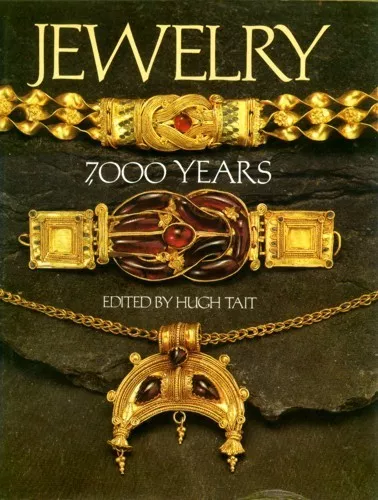
7,000 Years of Jewelry Greece Rome Byzantium Mesopotamia Phoenicia Persia Egypt
£63.75 Buy It Now 23d 6h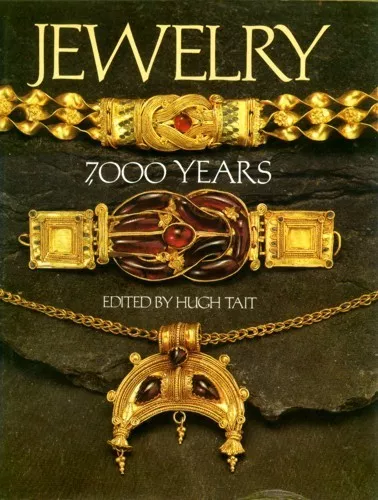
7,000 Years of Jewelry Mesopotamia Phoenicia Persia Egypt Greece Rome Byzantium
£76.50 Buy It Now 29d 0h
7,000 Years of Jewelry Ancient Celt Roman Etruscan Egyptian Phoenician Persian
£62.64 Buy It Now 10d 23h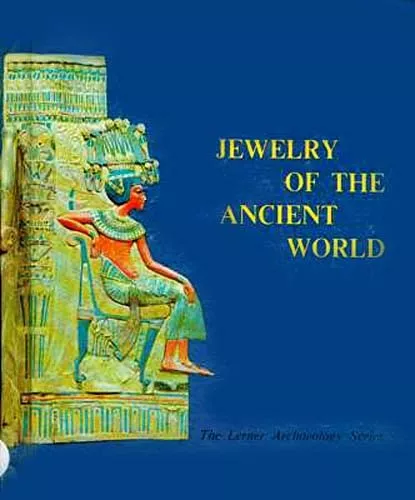
Ancient World Archaeology Jewelry Egypt Rome Persia Levant Greek Iron+Bronze Age
£79.69 Buy It Now 21d 21h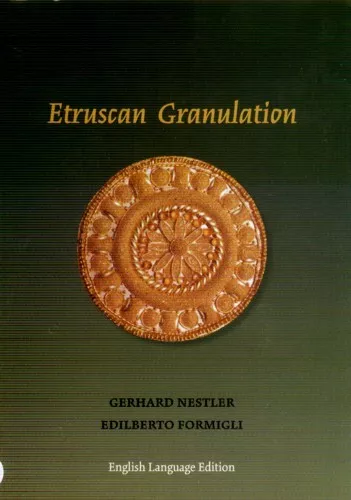
Ancient Etruscan Italy Gold Granulation Filigree Jewelry Earrings Bracelets Pins
£58.17 Buy It Now 12d 19h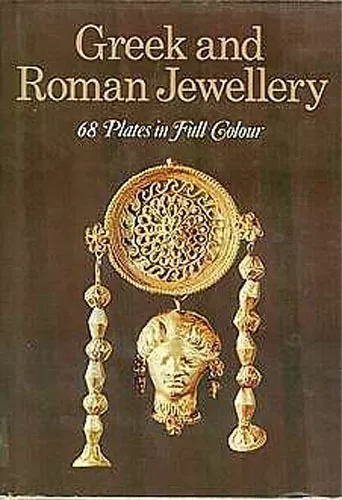
Greek Roman Hellenic Etruscan Jewelry Artisans Filigree Granulation 68 Color Pix
£39.84 Buy It Now 27d 4h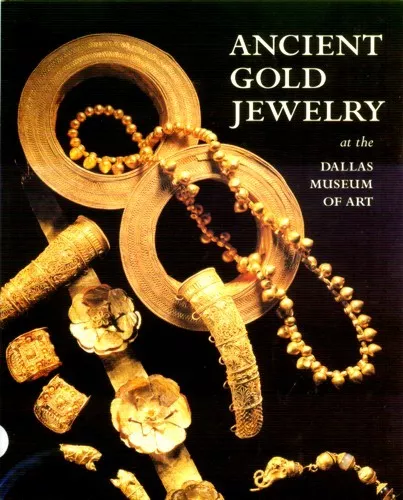
Ancient Gold Jewelry Etruscan Roman Greek Italian Near Eastern 700BC–300AD Color
£125.52 Buy It Now 15d 6h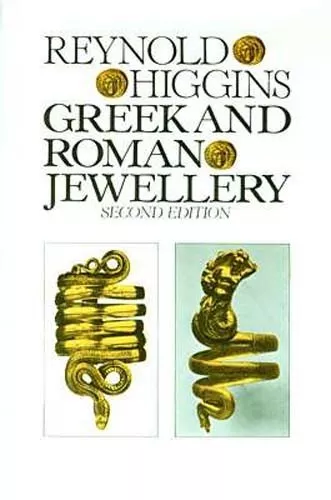
Ancient Jewelry Greek Roman Etruscan Minoan Crete Mycenaea Hellenic RARE Classic
£138.67 Buy It Now 23d 16h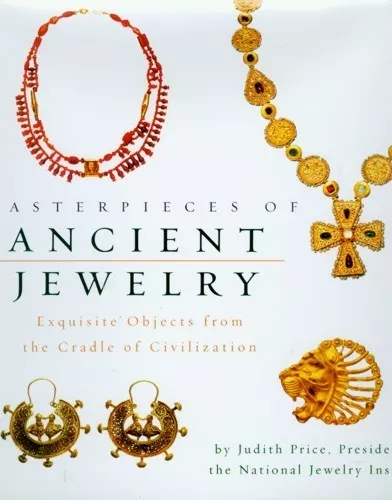
Masterpieces of Ancient Jewelry Byzantium Levant Mesopotamia Persia Islamic Arab
£151.42 Buy It Now 10d 0h
Ancient Engraved Gems Finger Rings Etruscan Persia Greek Hellenic Jewelry Oxford
£278.94 Buy It Now 28d 20h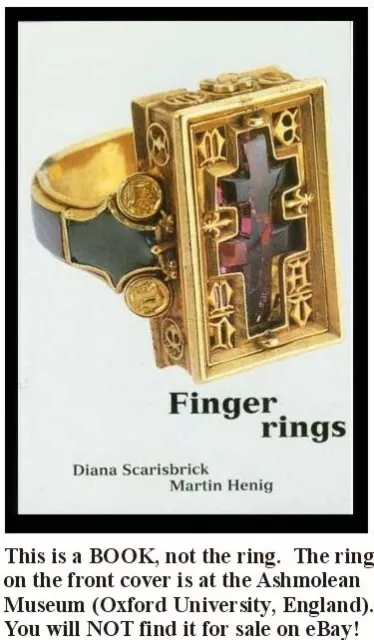
Ashmolean Ancient Finger Rings Rome Greece Minoan Hittite Egyptian Celt Medieval
£199.24 Buy It Now 17d 18h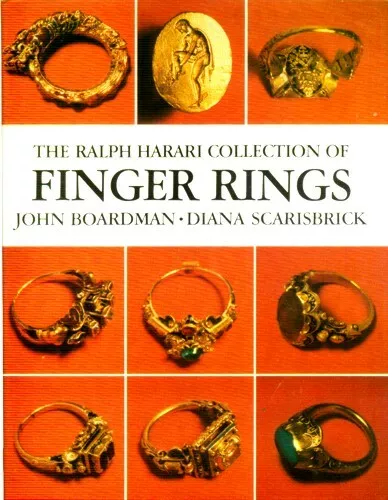
Ancient Finger Rings Etruscan Egyptian Sassanian Roman Greek Medieval Byzantine
£797.00 Buy It Now 8d 6h
Oxus Golden Treasure Ancient Tajikistan Uzbekistan Persia Coins Jewelry Statuary
£557.89 Buy It Now 20d 3h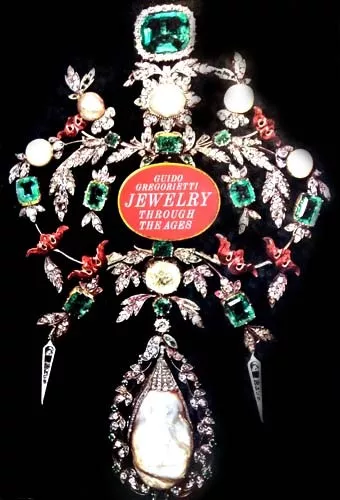
Ancient Jewelry 40,000 Years Rome Greece Egypt Asia Byzantium Medieval 400 Pix
£131.53 Buy It Now 2 watchers
2 watchers7,000 Years of Jewelry Mesopotamia Phoenicia Persia Egypt Greece Rome Byzantium
£197.30 Buy It Now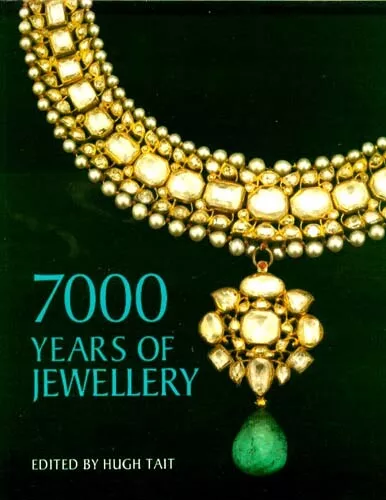
Jewelry 7,000 Years Ancient Rome Egypt Levant Persia Turkish Celt Greek Etruscan
£98.64 Buy It Now
7,000 Years of Jewelry Egypt Phoenicia Greece Near East Rome Byzantium Anatolia
£75.90 Buy It Now
Jewelry Ancient Paleolithic Bronze Age Egypt Etruscan Roman Islamic 25,000 Years
£328.85 Buy It Now
Jewelry Ancient Paleolithic Bronze Age Egypt Etruscan Babylon Islamic 25,000yrs
£219.23 Buy It Now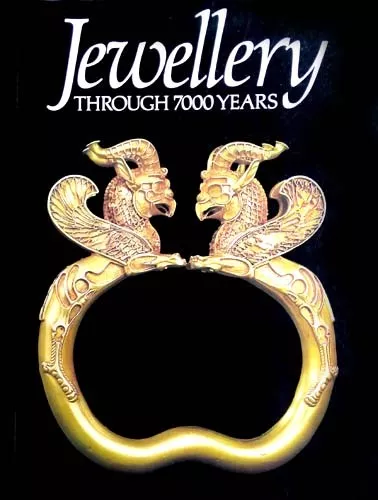 20 watchers
20 watchers7,000 Years of Jewelry Ancient Roman Egypt Anatolia Etruria Persia Celt Babylon
£55.94 Buy It Now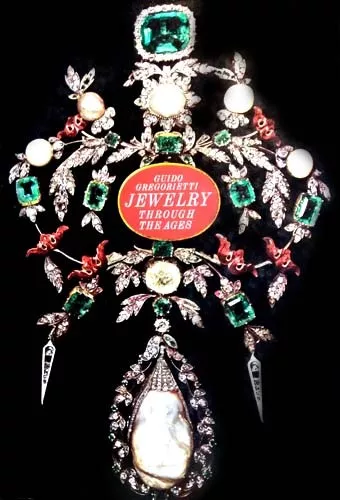 1 watcher
1 watcherAncient Jewelry 40,000 Years Paleolithic Byzantium Egypt India Rome Asia 400 Pix
£41.83 Buy It Now 2 watchers
2 watchersJewelry 7,000 Years Ancient Rome Egypt Levant Persia Anatolia Celt Greek Etruria
£47.81 Buy It Now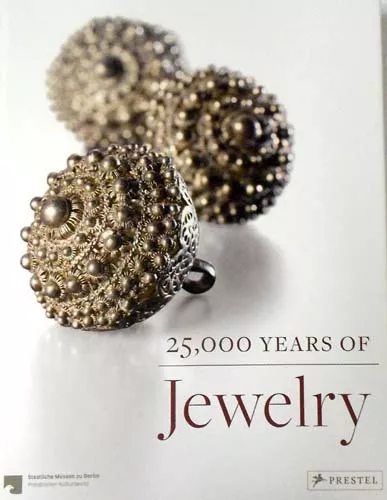 1 watcher
1 watcherJewelry Ancient Paleolithic Bronze Age Egypt India Etruscan Islamic 25,000 Years
£328.85 Buy It Now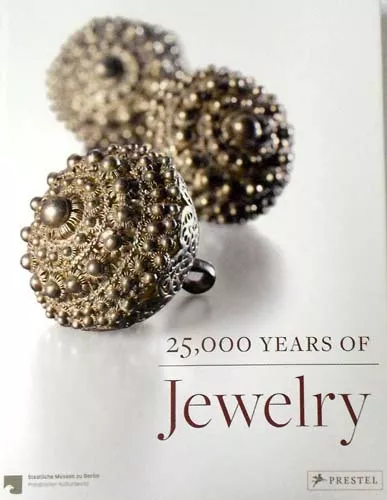 1 watcher
1 watcherJewelry Ancient Paleolithic Bronze Age Byzantine Greek Rome Islamic 25,000 Years
£191.27 Buy It Now 1 watcher
1 watcherJewelry Ancient Paleolithic Bronze Age Egypt India Etruscan Islamic 25,000 Years
£286.91 Buy It Now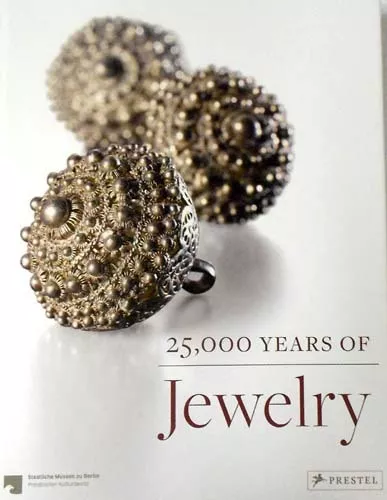 6 watchers
6 watchersAncient Jewelry Paleolithic Bronze Age Egypt Rome Sumer Medieval 25,000 Years
£191.27 Buy It Now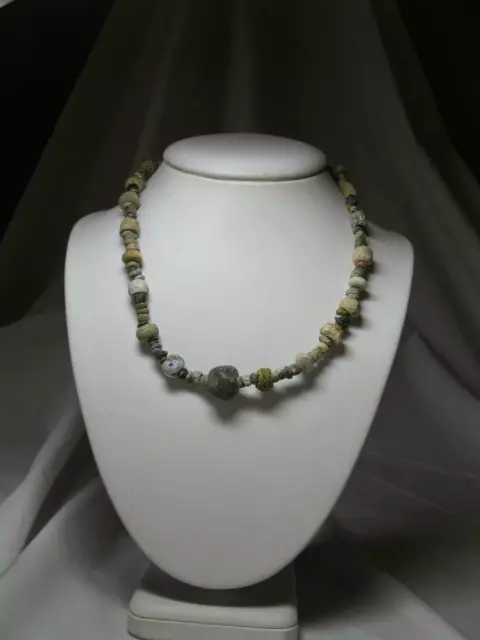
Authentic Ancient Roman Glass Bead Necklace 2000 Years Old 100 BC- AD 100
£474.22 Buy It Now 2 watchers
2 watchersAncient Jewelry 40,000 Years of Amulets Talisman Egypt India Rome Asia 400 Pix
£39.84 Buy It Now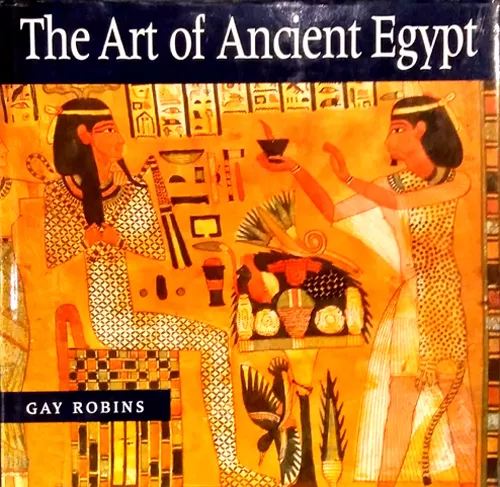 6 watchers
6 watchersAncient Egypt Art 3,000 Years of Paintings Jewelry Amulets Sculpture Tomb 250pix
£71.96 Buy It Now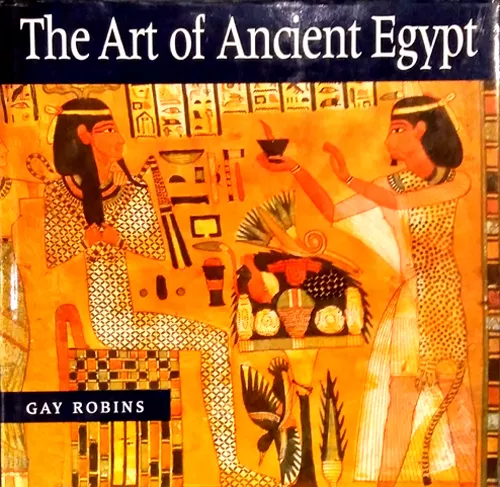 8 watchers
8 watchers3,000 Years of Ancient Egypt Art Sculpture Tomb Paintings Jewelry Amulets 250pix
£94.67 Buy It Now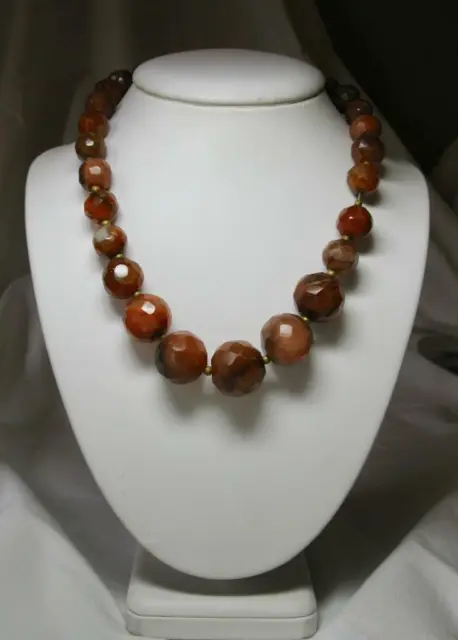 3 watchers
3 watchersAncient Carnelian Bead Necklace Parthian 2000 Years Old c.1st-3rd Century AD
£713.32 Buy It Now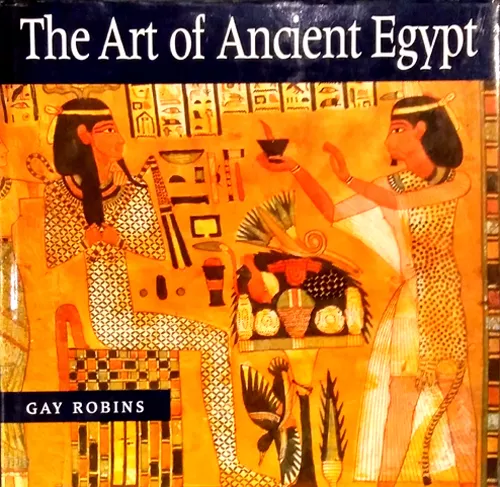 4 watchers
4 watchers3,000 Years Ancient Egyptian Art Sculpture Tomb Paintings Jewelry Amulets 250pix
£94.67 Buy It Now
